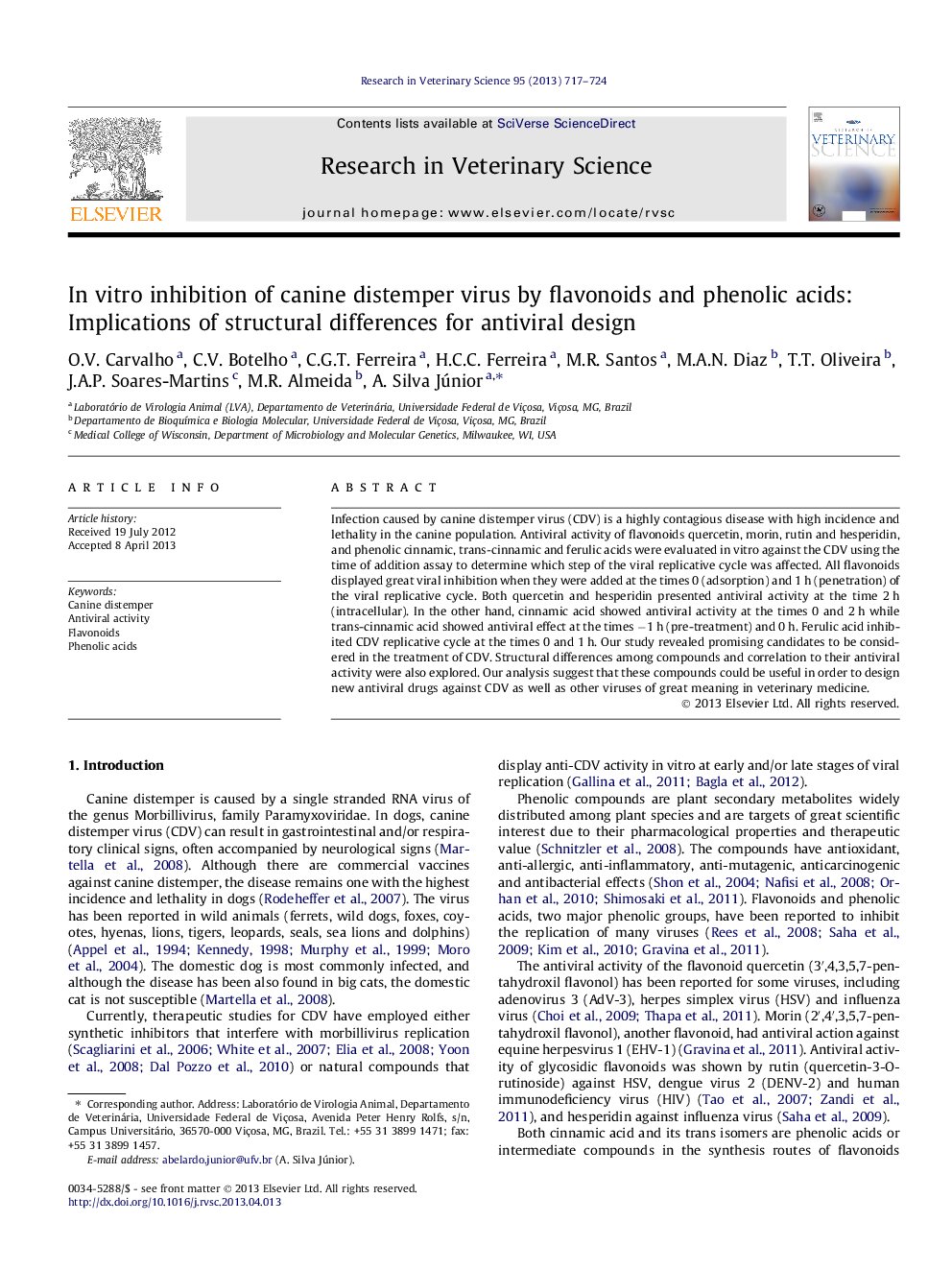| Article ID | Journal | Published Year | Pages | File Type |
|---|---|---|---|---|
| 2455140 | Research in Veterinary Science | 2013 | 8 Pages |
Infection caused by canine distemper virus (CDV) is a highly contagious disease with high incidence and lethality in the canine population. Antiviral activity of flavonoids quercetin, morin, rutin and hesperidin, and phenolic cinnamic, trans-cinnamic and ferulic acids were evaluated in vitro against the CDV using the time of addition assay to determine which step of the viral replicative cycle was affected. All flavonoids displayed great viral inhibition when they were added at the times 0 (adsorption) and 1 h (penetration) of the viral replicative cycle. Both quercetin and hesperidin presented antiviral activity at the time 2 h (intracellular). In the other hand, cinnamic acid showed antiviral activity at the times 0 and 2 h while trans-cinnamic acid showed antiviral effect at the times −1 h (pre-treatment) and 0 h. Ferulic acid inhibited CDV replicative cycle at the times 0 and 1 h. Our study revealed promising candidates to be considered in the treatment of CDV. Structural differences among compounds and correlation to their antiviral activity were also explored. Our analysis suggest that these compounds could be useful in order to design new antiviral drugs against CDV as well as other viruses of great meaning in veterinary medicine.
